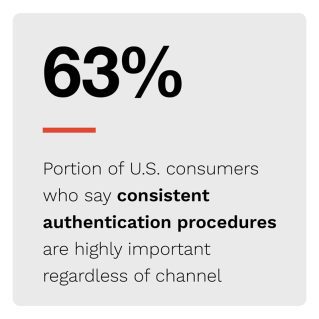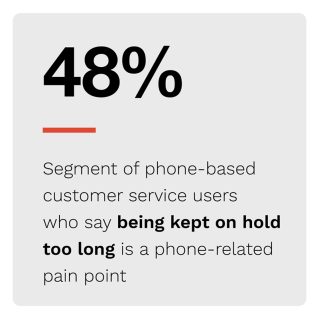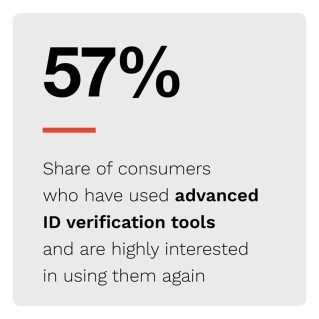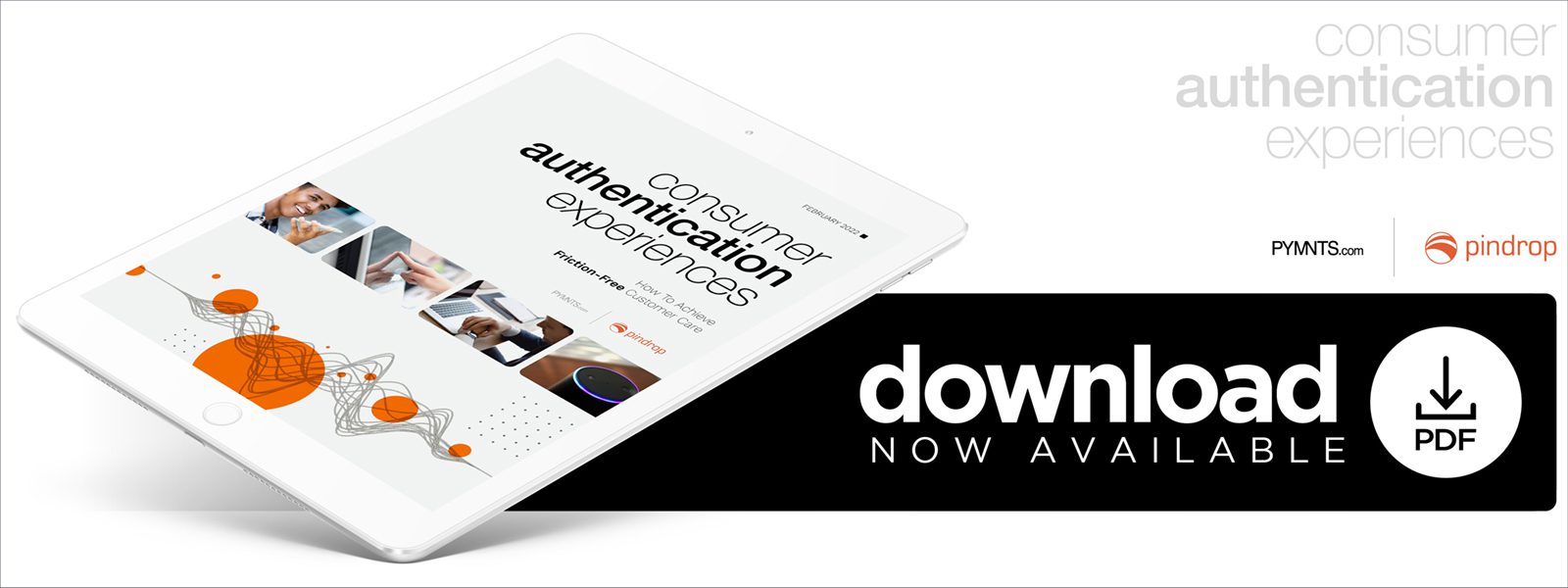Report: 57% of Consumers Say Voice Recognition, Fingerprint Scans Make Customer Service Experience Better

Most consumers hold accounts of some type, and virtually every account holder eventually needs to access or alter account information. Recent PYMNTS research found that approximately 182 million adults in the United States have accounts with financial institutions (FIs), and 89% of these consumers can access these accounts digitally.  Our data also revealed that more than 60% of consumers have accounts at FIs, telecommunications firms, insurance companies or retail merchants. The quality of consumers’ interactions with customer service representatives can make or break their relationships with these companies.
Our data also revealed that more than 60% of consumers have accounts at FIs, telecommunications firms, insurance companies or retail merchants. The quality of consumers’ interactions with customer service representatives can make or break their relationships with these companies.
These are just some of the key findings uncovered in Consumer Authentication Experiences: How To Achieve Friction-Free Customer Care, a PYMNTS and Pindrop collaboration. We surveyed 3,797 U.S. consumers’ views and attitudes toward authentication and security processes, detailing what they find satisfactory, what could be better and what diminishes their customer experiences.
Additional key findings from the study include:
 • While digital contact methods have grown in popularity — especially with younger consumers — the telephone remains a staple of customer service contact. Seventy percent of U.S. adults use the phone to speak to a customer service representative. Those who prefer to use an app to interact with companies skew younger and are more often members of the millennial or Gen Z cohort.
• While digital contact methods have grown in popularity — especially with younger consumers — the telephone remains a staple of customer service contact. Seventy percent of U.S. adults use the phone to speak to a customer service representative. Those who prefer to use an app to interact with companies skew younger and are more often members of the millennial or Gen Z cohort.
• Consumer concerns tend to cluster primarily around convenience and ease of use when accessing customer services. Users’ most common difficulties include struggling to remember credentials, being on hold for too long and repeating the authentication process. Between 25% and 30% of people who use online services consider keeping track of their credentials as a negative aspect of identifying themselves when logging in to an online account.
 • Consumers already have a strong interest in advanced ID verification — 57% of consumers who have tried this technology are interested in using it again. Millennials and bridge millennials lead the pack in wanting to use advanced identity verification technologies, with 51% of millennials and 45% of bridge millennials saying they are “very” or “extremely” interested in using them.
• Consumers already have a strong interest in advanced ID verification — 57% of consumers who have tried this technology are interested in using it again. Millennials and bridge millennials lead the pack in wanting to use advanced identity verification technologies, with 51% of millennials and 45% of bridge millennials saying they are “very” or “extremely” interested in using them.
Consumers’ lives are powered in many ways by their connections with their service providers. Advanced ID verification solutions can streamline the customer service experience, improving the experiences of individuals who will no longer need to suffer through remembering credentials or repeating failed verification processes while imperceptibly providing the strong security that builds trust and satisfaction. Providers adopting and demystifying these tools will best position themselves to succeed in an evolving, digital world.
To learn more about how consumer authentication experiences can be improved through advanced ID verification solutions, download the report.

